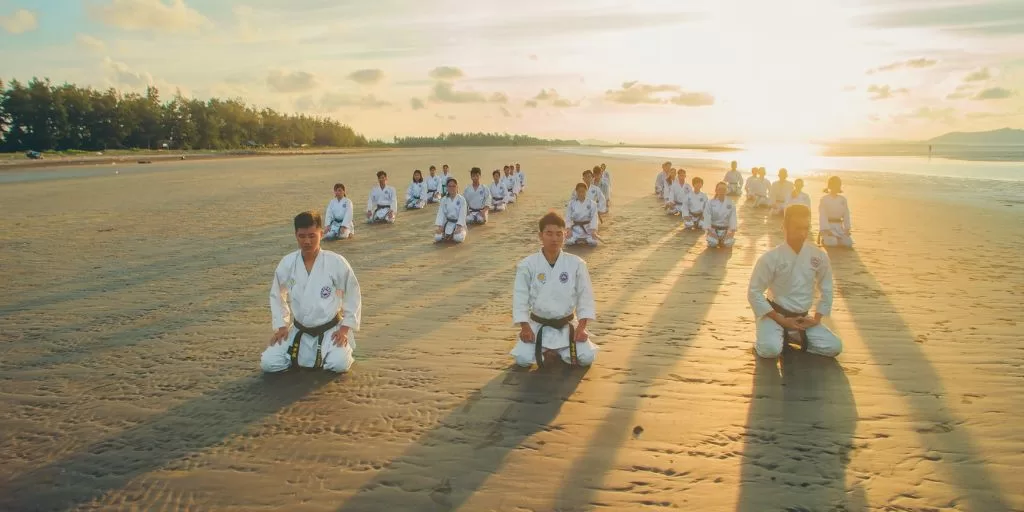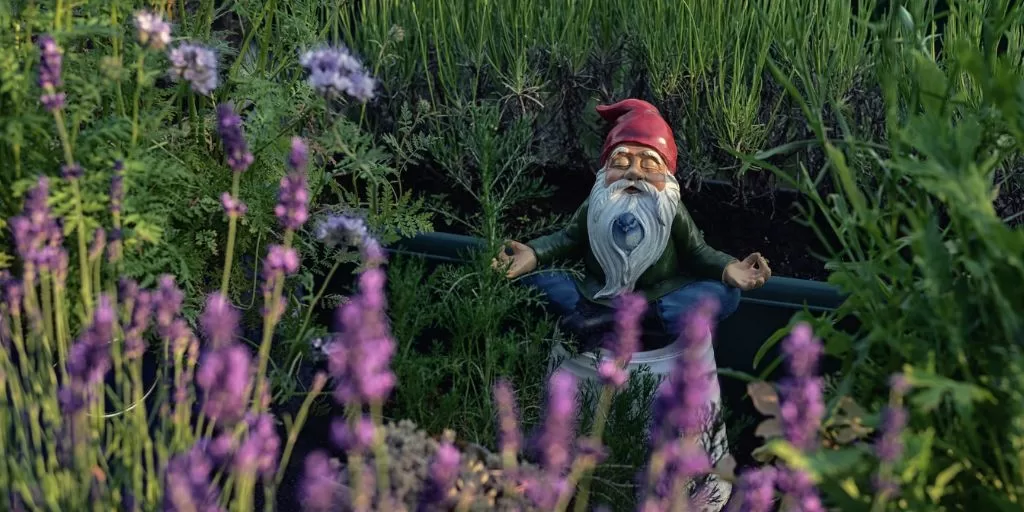As we strive for a life of purpose, power, and fulfillment, many of us are turning to ancient practices such as meditation and contemplation. But what exactly is the difference between these two activities? In this article we’ll explore the similarities and differences between meditation and contemplation, so you can make an informed decision about which practice best suits your needs.
There’s no denying that both meditation and contemplation offer tremendous benefits when practiced regularly. Studies have shown that they can reduce stress levels, enhance focus, boost creativity, and even improve physical health. So why choose one over the other? What sets them apart?
The answer lies in understanding the subtle nuances between these two distinct yet complementary approaches to inner exploration. Both present unique opportunities to access greater depths of knowledge within ourselves, but each has its own approach: while meditation often works with our energy flow through breathwork or visualization techniques, contemplation uses more cognitive strategies such as reflective self-inquiry or philosophical enquiry. Join us now as we delve deeper into this fascinating topic!
Disclaimer: Meditation is a mental exercise involving deep concentration. Mindfulness and contemplation can be classified as forms of meditation. Typically, when Westerners hear the word “meditation”, they automatically associate it with mindfulness. While mindfulness is, indeed, a form of meditation, meditation itself can include many other practices completely unrelated to mindfulness. Therefore, the words “meditation” and “mindfulness” can not always be used interchangeably, however, it can often simplify things and make it more digestible for the readers.
Definition Of Meditation

Recent studies have shown that over 14% of US adults have tried meditating at least once. It’s a popular activity, but what exactly is it? Meditation can be defined as an intentional and disciplined mental process to direct one’s attention to a chosen focal point with or without a defined aim. In short, it is a practice relying on deep concentration.
The commonly known forms of meditation involve different techniques and practices from diverse disciplines, including religious or spiritual traditions such as Buddhism, Yoga, Tai Chi, and Qigong. These practices vary in their applications and objectives; however, they typically involve paying close attention to one’s inner experience – body sensations, breath rate, physical posture, thoughts, or feelings. Through this heightened awareness, meditators often seek to cultivate mindfulness: an attitude of openness toward life experiences without judgment or resistance.
Meditation has become increasingly popular among practitioners looking for stress relief and relaxation. Research suggests that regular sessions of mindful meditation may lead to physiological changes like reduced breathing rates and blood pressure levels which could result in lower stress levels overall. Furthermore, many psychologists believe that taking time out during meditation helps individuals to gain clarity and perspective when making decisions.
Meditating can take on various forms depending on personal preference – by sitting still with eyes closed while focusing on the breath (mindfulness), repeating mantras (mantra meditation), visualizing images (visualization practice), or simply being aware of external surroundings without analysis (beingness). Whatever style you use, it’s important to remember that there are no hard rules – it’s about finding a comfortable spot where you feel safe letting go into the present moment with curiosity and acceptance.
Definition Of Contemplation
Contemplation is an ancient practice that has been embraced by many religions and philosophical traditions. It can be defined as a type of focused mental activity designed to bring clarity, insight, and understanding into the inner workings of oneself or life in general. In essence, it’s about exploring our thoughts, feelings, and beliefs in order to gain deeper self-knowledge.
At its core, contemplation involves actively engaging with one’s own experience or a certain idea on a more profound level than simply thinking or reflecting on something. Unlike basic mindfulness meditation which often tends to be more passive – allowing us to observe ourselves without judgment – contemplation encourages us to go deeper by questioning what we believe, why we think certain things, or how our behavior impacts others. While there are no rules for this kind of exercise – since everyone takes their own unique journey within – the aim is usually to arrive at some kind of personal growth or epiphany.
In various religious contexts, contemplation often refers specifically to contemplative prayer: a process of focusing all attention on the universe or god in order to cultivate spiritual awareness and knowledge. This particular form of contemplation typically includes elements like silence (or chanting), stillness (or movement), and detachment from external distractions; however, the same principles apply regardless of faith tradition: namely cultivating mindfulness so that one can discern truth from illusion while deepening their relationship with spiritual forces.
The benefits associated with regular contemplative practices have long been documented across diverse cultures and religions throughout history – both physical health improvements such as reduced stress levels as well as psychological gains including better emotional intelligence, enhanced creativity, and improved relationships with ourselves and others. With these kinds of advantages available through simple disciplines like sitting quietly or praying silently each day, it’s easy to see why contemplating has remained popular over time despite changing fads. By taking time out regularly for reflection and inquiry, individuals may uncover hidden truths that lead them toward greater wisdom and peace of mind.
History Of The Practice
From its spiritual origins to its modern applications, contemplation has been a part of the human experience for millennia. Whether it’s practiced in religious contexts or independent of faith tradition, this mental exercise is often seen as an important tool that can help us gain insight into the life and our own inner workings. Let’s take a closer look at the history of meditation and contemplation – from their ancient roots to how they are used today.
The practice of contemplation likely began with early humans who sought to make sense of their lives through reflection and introspection. As evidence shows, these spiritual activities were almost certainly present in some form within every culture throughout antiquity.
In more recent times (e.g., medieval period), philosophical schools began using contemplation as an essential part of their teachings; many believed that engaging with concepts like truth and beauty on deeper levels could lead individuals toward a greater understanding of themselves and the world around them. From here onward, the practice became increasingly popular until eventually reaching mainstream consciousness during the 20th century when physical health benefits started being attributed to regular meditative practices such as Yoga poses or sitting quietly with eyes closed for extended periods of time.
Today, people across all walks of life continue to experiment with different techniques associated with meditation and contemplation; whether it’s visualizing positive outcomes or simply taking a few moments each day to sit still without judgment – there is no right answer when it comes finding what works best for you personally. By embracing this journey within ourselves we may be able to unlock truths previously unknown while simultaneously cultivating rich relationships between body mind and spirit – ultimately leading us toward greater peace, joy, and fulfillment than ever before imagined.
Philosophical Underpinnings
As we dive deeper into the world of meditation and contemplation, it is crucial to explore their philosophical underpinnings. Both practices have been used for millennia as tools for self-reflection and spiritual guidance, but there are some key differences between them that should be taken into account when considering which one might work best for you. By engaging in a comparative analysis of both approaches, we can better understand how they differ and what benefits each may bring to our lives.
Mindfulness plays an essential role in the practice of both meditation and contemplation; however, while mindfulness meditation (at least in its most common form) usually involves focusing on physical sensations or bodily movements – such as breathing (yes, namely speaking breath is a type of movement as it uses breathing muscles to expand and collapse the lungs) – contemplation often encourages us to delve even further inward by exploring psychological approaches like self-inquiry or mental imagery techniques. This means that with contemplation we take the time to deeply contemplate questions about ourselves and the nature of reality without necessarily relying on any external sources of information; this allows us to develop greater insights from our own insightful thoughts rather than those dictated by outside influences.
In contrast, mindfulness practices tend to focus more heavily on cultivating awareness through breathwork and other physical exercises. These activities help clear out distracting thoughts so that we can appreciate subtle nuances within our environment – allowing us to gain greater clarity over difficult emotions or troubling situations in life. Although these two forms of inner exploration require different levels of commitment (contemplation being more rigorous), both offer invaluable opportunities for personal growth if practiced correctly.
For many individuals who seek balance within themselves, combining these two modalities into a holistic approach may be an ideal way to reap maximum benefit from either practice alone. With consistent effort, people can learn how to effectively merge mindfulness with reflective introspection – resulting in newfound clarity around complex issues as well as providing much-needed peace during turbulent times in life. Understanding your motivations behind why you want to embark upon this journey will enable you to identify which elements resonate most strongly with you – ultimately leading toward a path filled with understanding and acceptance.
However, in reality, both mindfulness and contemplation are still a form of meditation – a deep concentration practice. Hence, the real difference between meditation and contemplation can be explained in the following way: Meditation is the practice of deep concentration which can include contemplation, while contemplation itself is a meditative practice that focuses on gaining insight. Contemplation is a form of meditation and is limited to its boundaries, while the practice of meditation remains unbound (assuming it involves a form of deep concentration). It’s like sports and strength sports. The definition of sports is more general, whereas the definition of strength sports is more specific.
Also please note that although the word “mindfulness” is often used in conjunction with “meditation”, they can not always be used interchangeably. Mindfulness is merely a type of meditation (similarily to contemplation). On the other hand, meditation can include both mindfulness and contemplation, but can also involve many other forms of mental exercise that have nothing to do with contemplation or mindfulness.
Benefits To Mental Health
The mental health benefits of meditation and contemplation are widely recognized, but what do these practices actually offer us? To answer this question, we can explore the various facets of both approaches which bring about improved psychological well-being. With consistent practice, individuals can expect to gain increased mental clarity, focus, and overall peace – with some even experiencing a deeper connection to their inner selves or a greater understanding of spiritual matters.
When it comes to meditation specifically, research shows that its calming effects on our minds may be particularly beneficial for those facing stressors that come with modern-day life. For example, studies have found that engaging in mindfulness-based techniques can reduce anxiety symptoms by helping people develop healthy coping strategies when faced with difficult situations. Additionally, regular meditative practice has been linked to improved concentration levels as well as enhanced creativity – allowing practitioners to better connect their thoughts into meaningful insights and ideas.
Contemplative exercises also provide valuable tools for increasing self-awareness; however, unlike mindfulness meditation in its most common form (which typically tends to involve more physical activity), contemplation encourages a more introspective approach where participants evaluate their beliefs and values from an objective standpoint. This type of reflective thinking helps build resilience against emotional triggers while simultaneously providing much-needed distance from challenging circumstances. From here individuals may learn how to respond rather than react in certain scenarios – ultimately leading to enhanced decision-making skills in the long term.
Whether you’re looking for improved mental clarity or just want some time away from your daily grinds – incorporating either meditation or contemplation into your lifestyle could prove incredibly rewarding. Both modalities provide invaluable opportunities for personal growth if practiced correctly; they help cultivate acceptance within ourselves while offering respite from our troubled minds during tumultuous times. So why not give them a try today and see how far you can go?
Benefits To Physical Health

In addition to the mental health benefits that both meditation and contemplation offer, there is also a wealth of physical health advantages associated with these practices. In particular, they have been known to promote relaxation by reducing stress hormones in our bodies; this can help reduce inflammation as well as improve overall well-being. Moreover, their focus on mindfulness has been shown to encourage an internal connection between the mind and body – allowing us to better understand how our thoughts influence our physical responses.
Here are a few key ways that meditative and contemplative exercises may benefit our physical health:
- Stress Relief: Regular practice of either technique can help lower cortisol levels which in turn leads to reduced blood pressure and improved cardiovascular function. This promotes healthier coping mechanisms when faced with stressful situations while simultaneously aiding in restful sleep.
- Mind-Body Connection: As we become more mindful throughout the day, it can be easier for us to recognize any signs or symptoms of discomfort within ourselves – leading toward faster recovery times should anything arise.
- Improved Immunity: Research suggests that regular meditators can experience higher natural killer cell counts than non-meditators – indicating heightened immunity against disease-causing agents such as bacteria and viruses.
- Increased Energy Levels: Both approaches help individuals cultivate self-awareness which in turn allows them to identify sources of fatigue so they can make positive lifestyle changes accordingly. Through consistent practice, practitioners may even find themselves feeling recharged after sessions due to increased energy flow throughout the body.
Overall, meditation and contemplation provide invaluable tools for improving both our mental and physical health – allowing us greater control over our personal well-being while enhancing our quality of life at the same time. Whether used separately or together, these modalities may prove beneficial for anyone looking to reconnect with their inner selves while discovering newfound strength during difficult periods.
Techniques Involved In Each Method
Both meditation and contemplation have many different techniques that can be used to reap the benefits for mental and physical health. Both methods involve mindfulness, self-reflection, and relaxation – however, they differ in their approach to helping an individual connect with themselves on a deeper level.
Here are three key ways a beginner can explore these modalities:
- Meditation Techniques: These can involve focusing attention on the breath or body sensations while allowing thoughts to pass without judgment. Practitioners may also use guided visualizations or mantras to help deepen the experience. Advanced meditation methods can include influencing the heart rate, blood flow, body temperature, hormone levels, and more.
- Contemplation Techniques: This focuses more on developing insight through reflective questioning – often using nature as a vehicle for understanding how we interact with our external environment. It’s also worth noting that journaling is commonly employed when practicing this type of exercise.
- Mindful Contemplation Practice: This combines elements from both approaches by intentionally bringing awareness to the present moment experiences such as emotions or bodily sensations and contemplating their meaning and how they affect their personas. It encourages practitioners to observe any arising feelings non-judgmentally so they can develop greater agency over them later. Please note that there is a difference between analyzing or contemplating and judging.
Although each technique has its own unique advantages, all forms ultimately serve a very similar purpose – giving us access into ourselves in order to gain clarity and direction over our lives which leads toward improved well-being overall. With regular practice, anyone can learn how to skillfully navigate the terrain between introspection and action – enabling them to find balance within themselves and discover newfound strength along the way.
Time Commitment Required
Commitment to a regular practice of meditation and contemplation is essential for reaping the benefits. But how much time should you commit? That depends on each individual’s needs, ambitions, and lifestyle. Here are four ways to approach this question:
- Meditation Time: Depending on your goals and level of experience, anywhere from 5-20 minutes per day may be beneficial for a beginner. If you feel like that isn’t enough, gradually build up over time until you reach an ideal duration that fits into your daily routine. To give you a brief example, my longest meditation in general lasted around 7 hours (although I did take short breaks to go to the bathroom), while my longest meditation without moving my physical body lasted around 3.5 hours (in complete stillness). Generally speaking, setting aside at least one hour a week will allow some space for exploration while still ensuring that other obligations don’t suffer due to neglect. Make sure not to push too hard – if you start feeling overwhelmed or burnt out then recognize those feelings as signals from your body and adjust accordingly.
- Contemplation Time: This type of practice tends to require more commitment than meditation since it involves deeply pondering questions related to our lives and values – which can take days or even weeks (or longer) in total. It’s important to give yourself permission to explore whatever arises when engaging in contemplative inquiry without rushing toward any particular outcome. General, I would advise dedicating at least two hours of devoted time during the week for contemplating big questions about life purpose or morality; however, rather than forcing yourself into long periods of sitting once every few months, make smaller chunks throughout the year so you can stay connected with these inquiries regularly but also take breaks when needed.
P.S. Everyone has their own unique balance between doing vs being – finding what works best requires experimentation and patience as we learn how to nurture ourselves through both action and introspection. With consistent effort, committing quality time to both modalities can lead us down paths we never knew were possible!
Recommended Setting And Environment
Creating the right environment for meditation and contemplation can be just as important as setting aside dedicated time. While it’s possible to practice both modalities almost anywhere – from a park bench to an office cubicle – there are certain elements that can enhance our experience of each.
When meditating, finding a space with minimal distractions is key; this could be outdoors in nature or at home in your living room (or even on public transport if you’re feeling bold!). The atmosphere should also allow for feelings of safety and comfort – since these conditions help us stay present without getting distracted by worries about the future or nostalgia for the past. Soft music, aromatherapy candles, and low lighting are all helpful features to create a conducive atmosphere.
For contemplative practices, selecting an appropriate location is equally vital but often requires more creativity: some may find solace in churches or temples while others prefer retreats into nature or self-imposed hermitage away from society’s hustle and bustle. Regardless of what type of situation you choose, make sure it has plenty of privacy so that any inner revelations won’t be disturbed by external noises or conversations. Additionally, making use of materials such as journals, writing implements, incense sticks, and prayer beads can bring additional depth and focus when exploring deep questions related to spirituality and morality.
Ultimately, creating the perfect combination between location and ambiance will depend on each person’s specific needs and preferences; however, no matter where we decide to go for our practice sessions it’s always beneficial to take the necessary steps ahead of time in order to ensure optimal results!
Finding The Right Approach For You
When it comes to finding the right approach for meditation or contemplation, there is no ultimate solution. Each individual will have unique needs and preferences that must be taken into account in order to maximize their experience of these modalities. Fortunately, the range of options available can cater to almost any requirement – from traditional meditative practices such as Yoga and Tai Chi to more modern approaches like mindfulness and hypnosis.
For those looking to tap into a deeper level of mental clarity, contemplative practices offer an effective way forward. These timeless methods allow us to explore our inner world and provide us with insight into how our thoughts shape our lives and help us come up with creative solutions on both personal and collective levels. Whether you choose prayerful reflection or spiritual study, the key is taking your time and allowing yourself plenty of space for introspection before coming back out into the external environment.
Mindful approaches are another popular option when seeking greater mental well-being. By focusing on body sensations, breath awareness, and emotions we can learn how to build resilience against stressors while still enjoying life’s pleasures minus guilt or shame. This type of practice helps develop presence which in turn leads to increased self-awareness so that we’re better equipped to handle difficult situations without reacting impulsively.
Ultimately, discovering what works best for you requires patience and experimentation; but once found it can lead to tremendous growth along your path toward expanded consciousness! So take some time out today and find what resonates most deeply within – you might just be surprised at what awaits!
Frequently Asked Questions

Welcome to the meditation and contemplation FAQ section. Here, you can find the answers to the most common questions about mentioned practices. As I understand that there are a lot of questions that need answering, I have broken down the FAQ section into specific subsections, each answering a single question.
Read on if you are looking for guidance on your personal growth journey.
Is It Possible To Practice Both Meditation And Contemplation Simultaneously?
Is it possible to practice both meditation and contemplation simultaneously? This is a question worth pondering for those who seek spiritual growth. Indeed, many find great benefit in the two practices when done separately – but what about together? Could they be combined into one powerful exercise, or should they remain distinct activities?
Both meditation and contemplation are spiritual practices that can bring significant changes to our lives. The idea of practicing them at the same time may seem unusual; however, there is evidence to suggest that combining these disciplines could create an even more powerful experience than either alone. By focusing on both physical awareness and mental silence during the same session, we can obtain insight from both external and internal sources. Also, by allowing each method to support the other, practitioners can gain greater clarity from their sessions.
Combining mindfulness meditation and contemplation does not have to be complex. It’s best to start small; begin with just five minutes of meditating followed by five minutes of contemplating, then slowly increase as you feel comfortable doing so. Consider supplementing your routine with some grounding exercises such as Yoga or gentle stretching first – this will help ground your energy prior to beginning meditating/contemplating practice sessions. With enough patience and dedication, it’s entirely possible to reap all the benefits of both methods in one sitting!
Our minds are capable of tremendous things when given space and direction: why not use these tools together for maximum effect? When practiced regularly, mindfulness-enhancing tasks like meditation and contemplation can lead us down paths toward deeper understanding – if we’re willing to open ourselves up to new possibilities.
Also, please remember that mindfulness meditation and contemplation combined together are still just another form of meditation. For the sake of simplicity, when I talk about meditation (at least in this article), I typically mean basic mindfulness meditation that involves focusing on one’s breath to induce a state of calmness.
Are There Any Potential Risks Associated With Either Meditation Or Contemplation?
When it comes to the risks associated with meditation or contemplation, there are a few things that should be taken into account. While both activities can have powerful benefits on physical and mental health, if not done safely, they could potentially bring about some unwanted side effects. In this subsection, we’ll explore what these potential risks are so you can make an informed decision before incorporating either of them into your practice.
Meditation carries with it certain psychological risks that many people don’t consider when deciding to begin meditating. It’s important to note that while meditation has been used for millennia as a means of calming the mind and body in order to tap into inner peace, thoughts and feelings may arise during a session which can leave one feeling overwhelmed or distracted if they’re unprepared. That being said, those who practice mindfulness techniques such as recognizing external stimuli without attaching emotions will generally find their sessions more fulfilling than those who don’t prepare adequately beforehand.
On the other hand, contemplation is often considered less risky than meditation due to its slower pace and lack of rigid structure. However, this doesn’t mean it comes without any potential pitfalls. Those engaging in contemplative practices should also take care not to become too attached to their thoughts or feelings during periods of prolonged reflection – something which can lead to further levels of stress or anxiety if left unchecked. It’s also worth noting that contemplating alone for extended periods of time may cause one to become disconnected from reality; thus making reintegrating back into everyday life difficult after long breaks away from society.
Despite carrying similar underlying principles both meditation and contemplation require careful consideration when determining whether either activity suits individual needs. To ensure maximum benefit from either discipline whilst avoiding any potential hazards along the way, taking steps such as setting realistic goals at the onset and having someone else guide you through your journey (where appropriate) will go a long way toward ensuring success down the line.
So before embarking on either path remember that despite offering various advantages over traditional forms of therapy and relaxation methods; like anything else in life there are still inherent dangers lurking beneath the surface waiting to appear whenever cautionary measures aren’t observed accordingly. Therefore by using wisdom combined with common sense you’re sure to reap all the rewards each has to offer without running the unnecessary risk in pursuit of spiritual enlightenment or emotional balance!
Are There Any Specific Spiritual Traditions That Emphasize One Practice Over The Other?
Spirituality is an important aspect of many people’s lives, and the practices associated with it can vary greatly from one tradition to another. Some spiritual traditions focus on meditation practices while others emphasize contemplative techniques. But what are these two different approaches? What do they have in common, and how might understanding them help us develop a deeper connection to our spirituality?
Basic mindfulness meditation training often involves focusing on one’s breathing. Other meditation practices, such as mantra meditation involve repeating specific words over and over in order to enter into a state of deep relaxation and mental clarity. This type of practice has been used by various cultures for thousands of years as a way to connect more deeply with one’s inner self. Contemplative practices tend to be less structured than meditative ones; instead, practitioners may simply sit quietly and observe their thoughts as they arise, observe how they affect them, question why is that so, and dismantle them into smaller pieces to gain insight. These techniques can provide insight into ourselves, allowing us to gain clarity about who we are at our core.
While there are certainly differences between meditation and contemplation, they also share some similarities as well. Both involve quieting the mind in order to become aware of something beyond conscious thought – a process that takes patience and dedication no matter which method one chooses to pursue. Also, both types of practices offer potential benefits such as improved mood, increased concentration, decreased stress levels, and enhanced creativity.
It should come as no surprise then that many spiritual traditions embrace aspects of both meditation and contemplation in order to create a holistic approach toward personal growth and development. While each individual must decide for themselves which path best suits their needs, having knowledge of the various methods available provides valuable information for those seeking power through spiritual exploration.
How Do Meditation And Contemplation Affect Cognitive Functioning?
What are the effects of meditation and contemplation on cognitive functioning? This is an important question to consider, as both practices have been studied extensively in recent years. Research suggests that when it comes to cognition, there are some notable differences between the two activities – while they may share similar objectives, their approaches can differ significantly.
Meditation has long been associated with a heightened sense of calmness and focus. It involves sitting quietly and focusing on one’s breath or another object, usually for short periods of time each day. Studies suggest that regular practice of meditation can improve attention span, reduce stress levels and even increase brain plasticity. In terms of cognition specifically, research indicates that meditation helps strengthen executive functions such as problem-solving abilities and self-reflection skills, as well as improving memory recall.
Contemplation is more focused on deep reflection than physical stillness. It typically requires sustained concentration over longer periods of time than meditation does. Depending on the individual’s spiritual tradition or beliefs, this could involve studying religious texts or reflecting upon philosophical questions related to morality or ethics. With regard to how it affects cognitive functioning, studies indicate that contemplative practice encourages greater creativity and imaginative thinking due to its emphasis on finding creative solutions to complex problems rather than relying solely on logical reasoning alone. Contemplation also appears to promote insight into one’s own behaviors by encouraging introspection through engaging in reflective conversations with oneself.
Given these distinct yet complementary benefits offered by both practices, it seems clear that incorporating elements from both forms of mental training into our lives would be beneficial for overall well-being. By combining meditative techniques like focus and relaxation exercises with the deeper insights gained through contemplation, we can become better equipped to tackle the challenges life throws at us every day – ultimately leading us closer to achieving our goals and living a fuller life.
Are There Any Specific Tools Or Resources That Can Help Me Learn More About Either Practice?
Are there any specific tools or resources that can help me learn more about either practice? This is an important question to consider when beginning a meditation and contemplation journey. Whether you’re just getting started or have been engaging in these practices for many years, having the right resources can make a big difference in achieving desired outcomes.
There are various meditation techniques available depending on what type of outcome you are seeking. Meditation tools such as guided meditations, breathing exercises, mantras, and mindfulness activities can be used to help individuals reach their goals. Similarly, resources related to contemplation may include self-reflection activities and contemplative inquiry methods. It’s also helpful to find ways to incorporate music, art, and nature into your practice.
To engage our audience with this topic further, here is a bullet point list of four items:
- Guided meditations
- Breathing exercises
- Contemplative inquiry methods
- Incorporating music, art & nature into your practice
For those looking for power through meditation and contemplation, it’s important to take advantage of all the resources out there. There are countless books, videos, and podcasts that provide guidance on how best to approach each practice. On top of that, attending classes or workshops led by experienced practitioners can give valuable insight into honing one’s skillset. Finally, using technology is another great way to stay connected with experts around the world who offer specialized advice tailored to individual needs.
Conclusion

Meditation and contemplation are two powerful practices that can help us to better understand our minds, bodies, and spirits. They each have their own unique benefits, but they also share many similarities. While there may be some potential risks associated with either practice, these can be minimized through careful guidance from an experienced teacher or mentor. Furthermore, depending on the spiritual tradition one follows, either meditation or contemplation may take precedence over the other in terms of emphasis and importance. Regardless of which path is chosen though, both practices offer profound opportunities for growth and transformation when practiced regularly and mindfully.
Ultimately, we must remember that no matter what tool we use – meditation or contemplation – the most important part is to find a method that works for us individually. By exploring the various resources available such as books, classes, guided meditations or visualizations, Yoga postures, and breathing exercises; we will eventually discover what resonates best within ourselves. With dedication and patience comes clarity and insight into who we truly are at our core – allowing us to live more fully in every moment.




